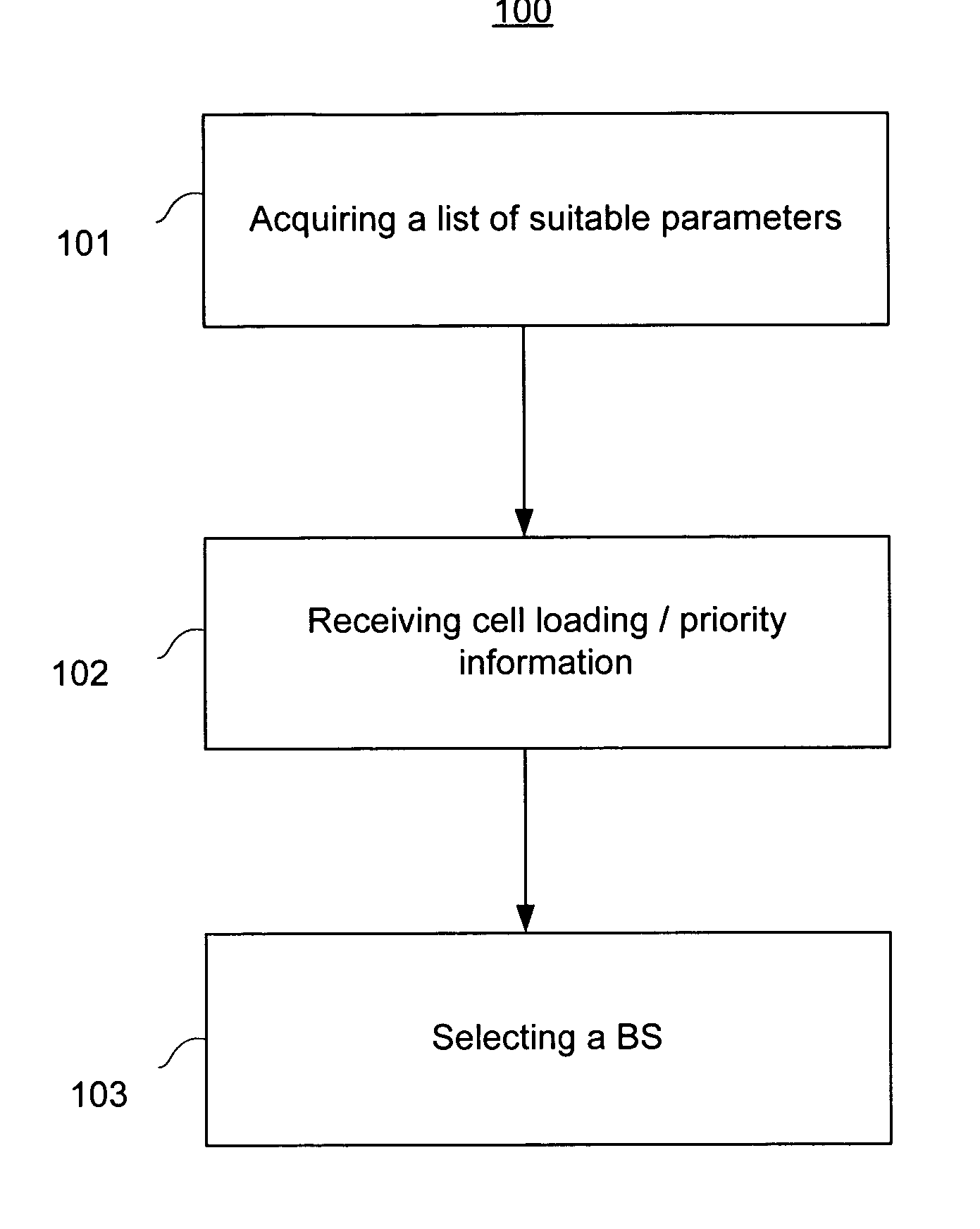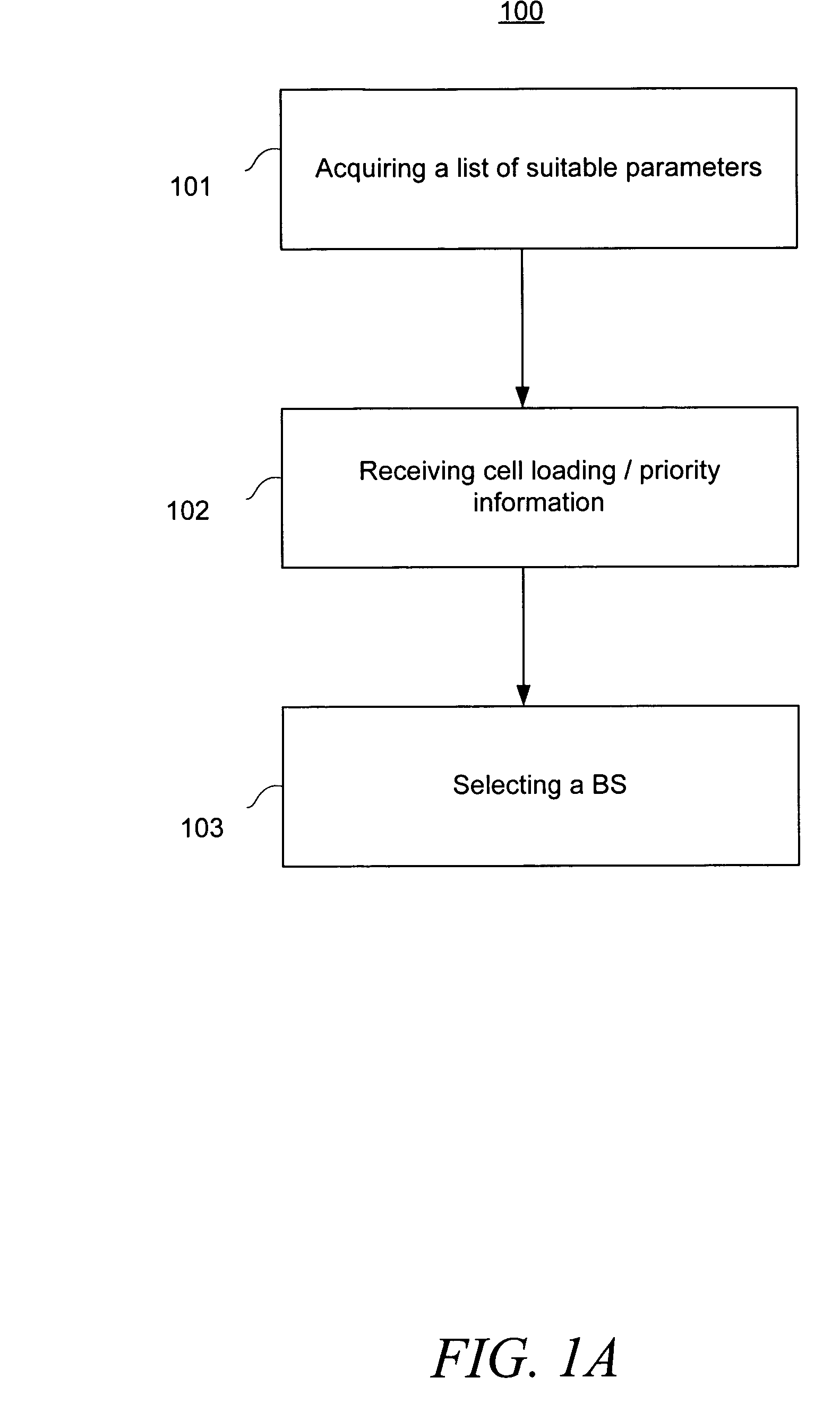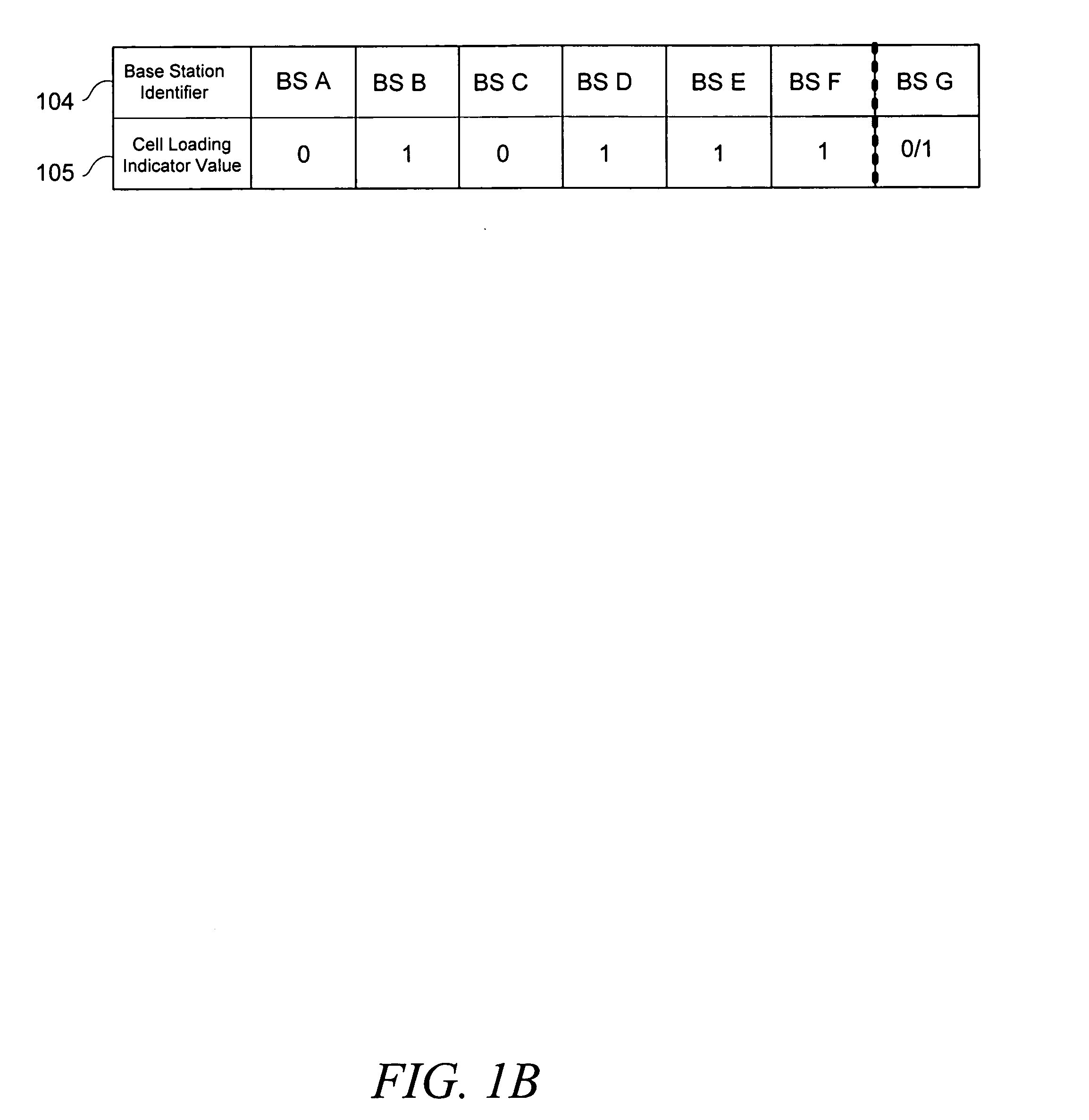Mobile station connection management utilizing suitable parameter information
a mobile station and parameter information technology, applied in the field of wireless communications, can solve the problems of ms making less than optimal decisions, limiting bandwidth capacity, and further exacerbated disadvantages of the prior art, and achieve the effect of efficient management of connections
- Summary
- Abstract
- Description
- Claims
- Application Information
AI Technical Summary
Benefits of technology
Problems solved by technology
Method used
Image
Examples
Embodiment Construction
Overview
[0029] The present teachings comprise a method for providing a mobile station (“MS”) with information relevant to making an intelligent base station (“BS”) switching decision. Embodiments comprise a method by which the MS receives BS priority and / or cell loading information, and based on such information, the MS selects a particular BS to assert a request for a primary communications channel from a BS. One embodiment, in a wireless communications system, addresses the disadvantage in the prior art of latency by providing a MS with BS latency information prior to the MS asserting a switching request to a network.
[0030] Hence, in one embodiment, the MS can decide not to switch to a particular BS if the associated latency could cause problems for the MS, such as for example a dropped call or an unacceptable loss of quality of service.
[0031] Although many of the exemplary embodiments used herein describe the present teachings in the context of a cdma2000 system, those of ord...
PUM
 Login to View More
Login to View More Abstract
Description
Claims
Application Information
 Login to View More
Login to View More - R&D
- Intellectual Property
- Life Sciences
- Materials
- Tech Scout
- Unparalleled Data Quality
- Higher Quality Content
- 60% Fewer Hallucinations
Browse by: Latest US Patents, China's latest patents, Technical Efficacy Thesaurus, Application Domain, Technology Topic, Popular Technical Reports.
© 2025 PatSnap. All rights reserved.Legal|Privacy policy|Modern Slavery Act Transparency Statement|Sitemap|About US| Contact US: help@patsnap.com



